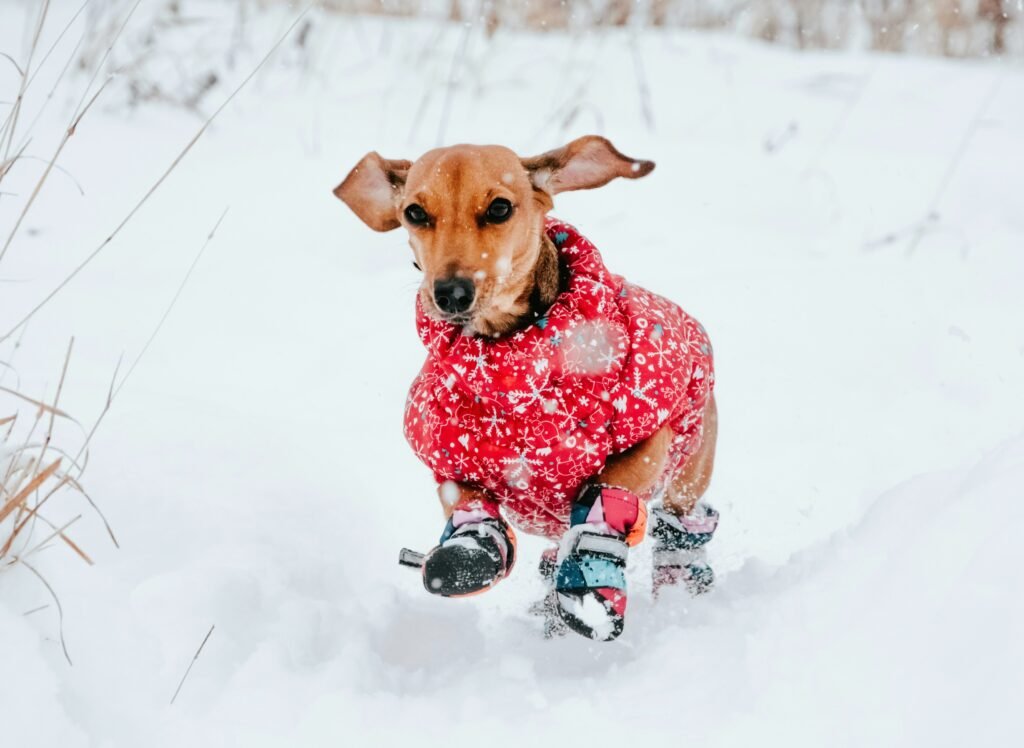
When winter arrives, we bundle up in warm clothes, scarves, and boots to stay warm. What about our dogs, though? Do dogs need shoes in the winter, or is their natural paw padding enough to protect them from damage? The answer is in many various factors, including breed, climate, and environment. Let’s explore when dog shoes are utilized and how you can determine if your pup might benefit from them.
When Does Your Dog Need Winter Shoes?
While most dogs can withstand cold temperatures without additional protection, there are a variety of scenarios in which winter dog shoes will come in handy:
1. Walking on Ice and Snow
Slushy walks and snow-covered paths are hard on a dog’s paws. Slipping on the ice can damage them, with snow wedged between their toes and pushing in, irritating them or even giving them frostbite. Footwear insulates them and provides traction, preventing these issues.
2. Exposure to Rock Salt and De-Icing Chemicals
Several cities utilize salt and chemical de-icers on sidewalks and roads to ensure ice is prevented from accumulating. While beneficial for humans, such substances can irritate and be toxic to canines. Rock salt will cause the paw pads to become dried out, crack, or even become sore. If your dog is always strolling over treated surfaces, guard boots will preclude irritation or inadvertent intake when licking his paws.
3. Very Low Temperatures
Some dog breeds, especially small breed dogs, short-haired dogs, and lean dogs with minimal body fat, tend to be cold-sensitive. With very cold conditions, boots may help keep some heat in and protect against frostbite, especially in extreme temperatures.
4. Sensitive or Damaged Paws
If your dog is already suffering from dry or cracked paw pads, shoes can provide them with a bit of additional protection while they heal. Dogs with arthritis or other joint-affected dogs might also enjoy shoes providing additional traction on slippery ground.
5. Long Walks or Hikes
If you and your pet love to be outside, winter boots may make long walks in the winter more bearable. Sharp ice, hidden litter, and bumpy ground are all potential hazards, but shoes serve as a shock absorber from potential damage.
Signs Your Dog May Need Winter Shoes
Not sure if your dog needs extra protection? Look for these signs:
- Lifting their paws frequently while walking – This is an indication of cold irritation or discomfort caused by ice and salt.
- Steering clear of or limping on certain surfaces – Your dog is likely uncomfortable because of the coldness of the ground’s surface.
- Red, dry, or cracked paw pads – These are indicators that the weather on their paw pads is too extreme.
- Excessive licking of the paws after walks – This could be a try to relieve irritation caused by salt or chemicals.
Choosing the Right Winter Shoes for Your Dog
If you decide your dog requires shoes, consider the following key features:
- Good Fit – The shoes should fit snugly but not too tightly, so your dog can walk naturally without slipping.
- Non-Slip Soles – For grip on slippery or snowy ground.
- Waterproof Material – To keep paws warm and dry.
- Adjustable Straps – For a comfortable fit to prevent shoes from slipping off while walking.
- Comfortable Interior Lining – Soft material can prevent chafing and keep paws warm.
- Alternatives to Dog Shoes
If your dog is not accepting of shoes, there are alternative means of protecting their paws in winter:
- Paw Balm or Wax – Applying a protective balm before walks can act as a barrier to salt and cold.
- Washing Paws Post-Walks – Washing away salt and chemicals post-walks prevents them from causing irritation and ingestion.
- Short Walks on Bad Cold Days – Shortening walks on very cold days can keep your dog warm.
- Steering Clear of Snowy Routes – Walking on fresh snow is gentler for paws than icy pavement that has been salted.
Final Thoughts
Not all dogs need winter shoes, but if your dog resides in harsh weather, added support can be a game-changer. If your dog does not enjoy being outside when it is cold, is often on road salt, or has sensitive paw pads, winter shoes may be an investment worth making. Watch for their behavior, choose the right gear, and keep healthy paws so that they can have fun on their winter adventures!
